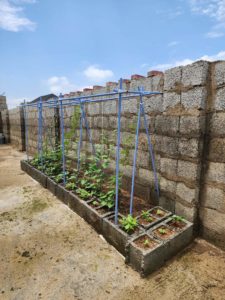The Yorùbá Òrìşà Philosophy: A Cultural Odyssey In Brazilian Art Colleges
![]()
In the kaleidoscope of Brazilian arts, the vibrant hues of Orisa culture paint a profound connection to Yoruba heritage. From the canvas to the stage, this spiritual entity weaves its essence into the creative tapestry of Brazilian artists, transforming their works into living expressions of cultural identity.
Brazilian artists, with meticulous craftsmanship, bring Orisa to life through sculptures, paintings, and intricate designs. Renowned sculptors like Antonio Francisco Lisboa, commonly known as Aleijadinho, have left an indelible mark by sculpting Orisa figures in intricate detail. Aleijadinho’s works, such as the soapstone sculptures in the Sanctuary of Bom Jesus dos Matosinhos, stand as testament to the fusion of artistic excellence and spiritual devotion.
In the contemporary art scene, Yoruba-descendant artists like Ayrson Heráclito draw inspiration from Orisa to create visually striking pieces. Heráclito’s installations, often featured in major art exhibitions, explore the intersection of Yoruba spirituality and Brazilian identity. His works serve as a bridge between the past and present, embodying the enduring legacy of Orisa in Brazilian visual arts.
The presidential palace itself is not immune to the allure of Orisa. Paintings depicting the vibrant pantheon find a home within the corridors of power, showcasing the integration of Yoruba spirituality into the highest echelons of Brazilian governance. This inclusion speaks volumes about the cultural significance and widespread acceptance of Orisa in various facets of Brazilian society.
Tarcísio de Amaral, a contemporary Brazilian artist, further enriches the visual representation of Orisa. His paintings intricately capture the divine energy of Yoruba deities, reflecting a deep understanding of their symbolism and significance. Amaral’s work serves as a testament to the evolving narrative of Orisa in contemporary Brazilian art, where artists continue to explore and reinterpret the spiritual motifs.
Orisa’s influence extends seamlessly into the realm of performing arts, where dancers and choreographers pay homage to Yoruba gods and goddesses. Acclaimed choreographer Lia Robatto, a pioneer in Afro-Brazilian dance, seamlessly integrates Orisa-inspired movements into her choreography. Her dance productions, such as “Oriki,” unfold as spiritual narratives that celebrate the vibrancy of Yoruba culture.
Cultural groups like Ilê Aiyê, founded by Antonio Carlos Vovô, showcase the synergy between Orisa and performing arts. Ilê Aiyê, a carnival bloco, incorporates Orisa themes into their presentations, emphasizing the importance of cultural preservation. Through captivating performances, they create a visual spectacle that immerses audiences in the rhythmic heartbeat of Yoruba spirituality.
Brazilian art colleges, cognizant of the historical significance of African arts, have embraced Orisa as a powerful motif in promoting Afro-Brazilian ancestry. Notably, the carnival colleges have become bastions for the representation of Yoruba Orisas. Institutions like the Escola de Belas Artes da Universidade Federal do Rio de Janeiro foster an environment where students delve into the richness of Yoruba traditions.
Scholars like Emanoel Araujo, a prominent curator and academic, have played a pivotal role in elevating the discourse around Orisa in Brazilian arts. Araujo, through his work at the Museum of Afro Brazil, has curated exhibitions that highlight the profound impact of Yoruba culture on Brazilian artistic expressions. His efforts contribute to the academic exploration of Orisa, ensuring its recognition as a vital element in the narrative of Brazilian arts.
The presence of Orisa in the presidential palace underscores its cultural ubiquity. As one navigates the corridors of power, paintings depicting the divine pantheon offer a visual testament to the rich tapestry of Brazilian culture. This integration signals a broader acceptance of diverse cultural influences within the nation’s highest institutions.
Contemporary artists like Tarcísio de Amaral further amplify the visual representation of Orisa in Brazilian art. Amaral’s creations, marked by their vibrant colors and intricate details, provide a contemporary lens through which viewers can connect with the spiritual essence of Yoruba deities. His works contribute to a dynamic dialogue that bridges traditional symbolism with modern artistic expressions.
The influence of Orisa transcends national borders, establishing connections with contemporary Nigerian Yoruba artists. Adeyinka Olaiya, a notable artist, defines Ifa poems and divinity in mixed-media paintings, creating a cross-cultural dialogue that spans continents. Olaiya’s works, exhibited globally, serve as a testament to the enduring influence of Yoruba spirituality beyond Brazil’s shores.
Carnival, a pinnacle of Brazilian cultural expression, becomes a vivid canvas for the rhythmic beats and vibrant movements inspired by Orisa. Drums, dances, and songs in Orisa rhythms are not mere artistic choices but essential components of the carnival display. The compulsory inclusion of these elements reflects the deep-rooted connection
The post The Yorùbá Òrìşà Philosophy: A Cultural Odyssey In Brazilian Art Colleges appeared first on The Ancestral News.


